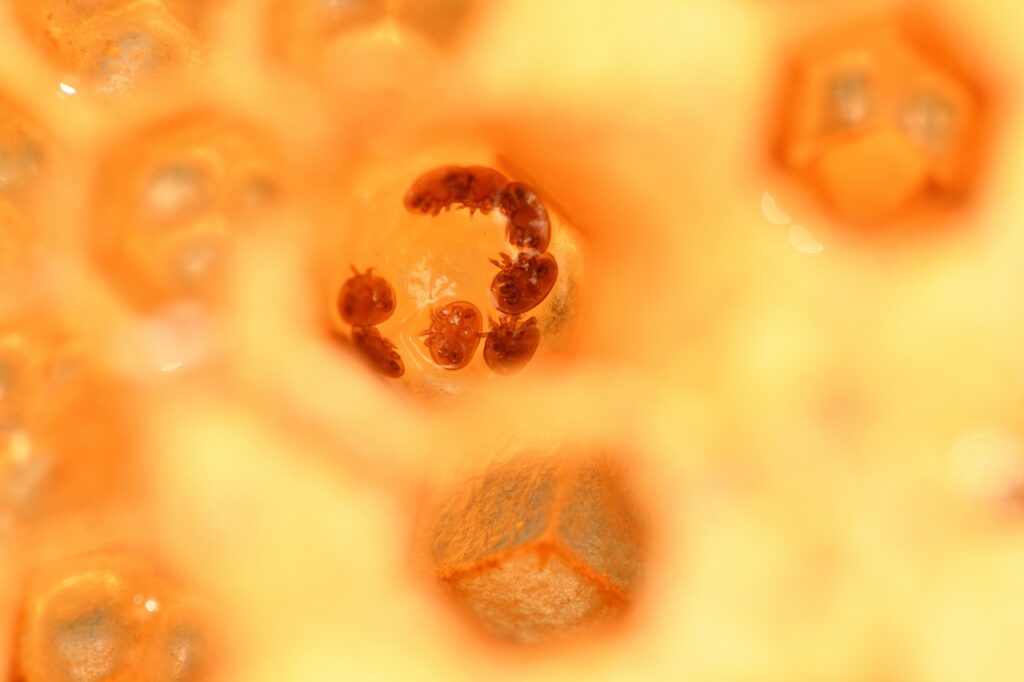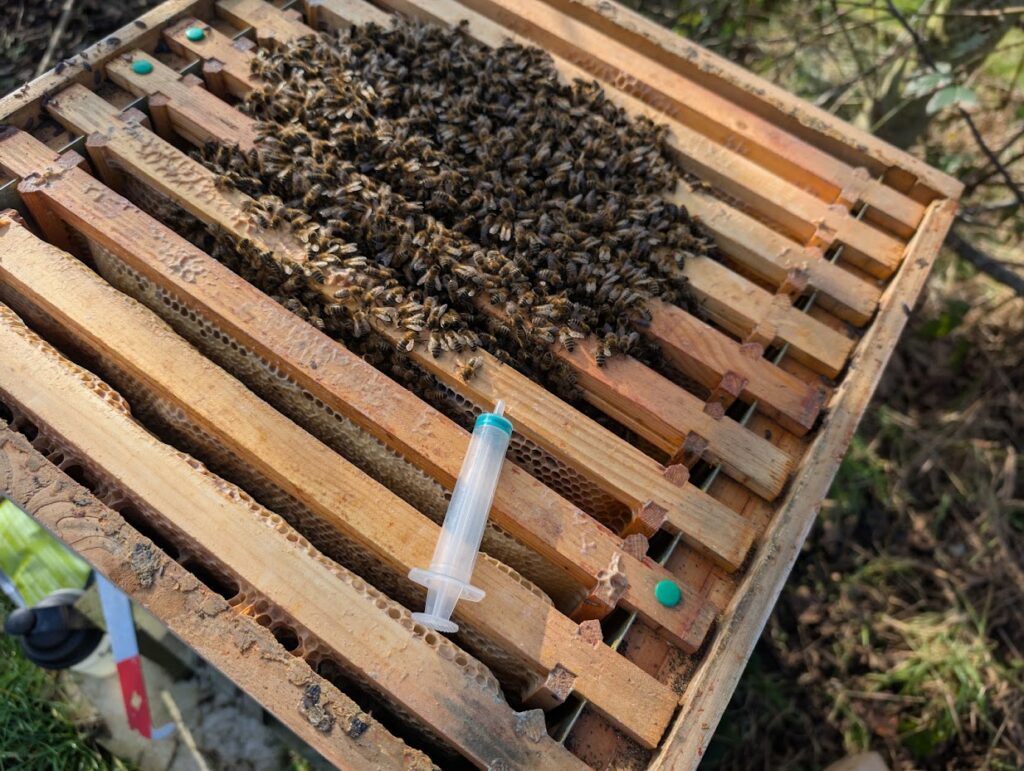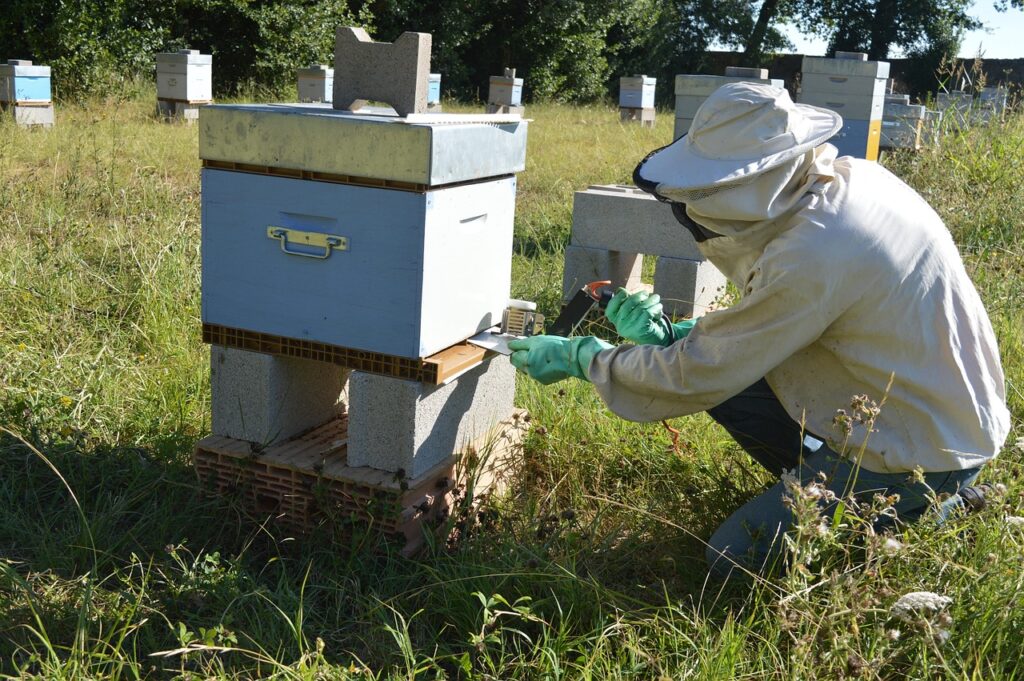It’s winter! Grab your full FFP3 mask respirator with a filter for organic acids! It’s time to go vaporising!
At this time of year, many beekeepers will take the opportunity to apply the oxalic acid treatment to their colonies. Oxalic acid is a natural compound that beekeepers use against their nemesis, the despised Varroa destructor that plagues honey bees. This treatment can obliterate the Varroa mites that are attached to the bees themselves, but it cannot touch any Varroa mites that have found their way to the brood sealed up beneath wax cappings. That’s what makes oxalic acid a popular winter treatment – the queen does not tend to lay eggs during the cold season so there is no brood, hence nowhere for the mites to hide.

Winter is indeed the ideal time, but oxalic acid is sometimes applied on other occasions. For example, a freshly caught swarm will have no baby bees, no matter what time of year it is, so a wise beekeeper will treat the new colony for Varroa when they move in. Some beekeepers may use the oxalic acid treatment when there is brood, but they will have to repeat the treatment three weeks in a row to catch the mites appearing at each stage of the brood cycle. There are also some beekeepers who cage their queen for three weeks to prevent her from laying so that they can perform the treatment no matter the weather.
Are you ready for the gory details of how oxalic acid takes out the Varroa destructor? It works by damaging their mouth, thus removing their ability to eat and therefore causing them to starve to death. And it works by damaging the adhesive lobes on their feet, thus removing their ability to grip hold of their chosen host, and it penetrates their body through those lobes to cause severe damage to their vital organs, resulting in death.
There are two main methods to inflict these gruesome deaths upon the Varroa mites: the trickle method and the vaporisation method.
The trickle method is less scary for the beekeeper, so it’s favoured by most hobbyists, and I can’t blame them! Trickling involves whipping up a deadly potion of oxalic acid and sugar, and dribbling it onto the bees using a syringe. The sugar increases the time the oxalic acid remains in a liquid form, allowing it to kill more mites. When the bees get the urge to groom themselves, they spread the potion of death throughout the colony and soon the mites come into contact with it too. Cue their grisly demise.

The trickle method works. It is considered only slightly less effective than the vaporisation method. But…
Fearless beekeepers favour vaporisation. It’s faster, especially when you have a larger number of hives to care for. It’s also likely to be better for the health and wellbeing of the bees. There are concerns about the oxalic acid causing harm when they ingest it during the trickle method process. Vaporisation is also less stressful to the bees because it is less disruptive since the hive remains closed for the entire process.
Why is vaporisation frightening? Because it involves unleashing a gas that is toxic to humans. If inhaled, it can cause substantial damage to the lungs. If touched, it can cause burns. If ingested, it can cause kidney failure. Wear goggles, wear waterproof gloves, wear your beekeeping suit, wear a respirator.
If you’re feeling brave, this is how it’s done:
Vaporisation is similar to fumigation. It involves leaving the hive closed and placing a heating element and oxalic acid through the entrance. Once the temperature reaches 157°C, sublimation occurs. This means the oxalic acid crystals transform from a solid into a gas and the fumes fill the hive.

The ideal time to perform this treatment is when the temperature outside is between 4°C and 16°C. Below this, the bees will be too tightly clustered for the vapours to work effectively. Above this, there will be brood in the hive. Keep a close eye on your thermometer and strike when the heat is right. Once it is, get out there and murder with reckless abandon! Just make sure to avoid being collateral damage during your killing spree.